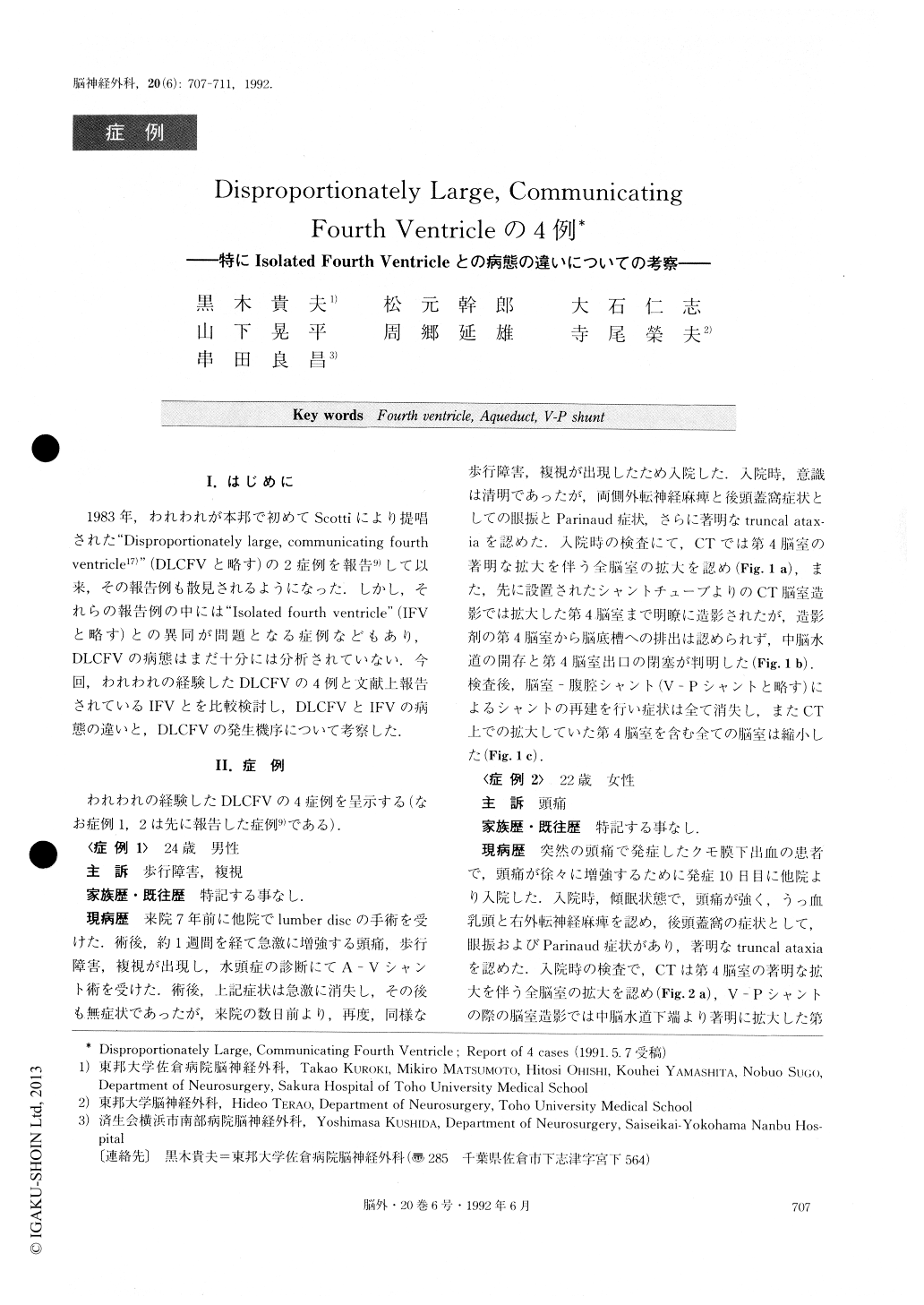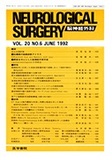Japanese
English
- 有料閲覧
- Abstract 文献概要
- 1ページ目 Look Inside
I.はじめに
1983年,われわれが本邦で初めてScottiにより提唱された“Disproportionately large, communicating fourthventricle17)(DLCFVと略す)の2症例を報告9)して以来,その報告例も散見されるようになった.しかし,それらの報告例の中には”Isolated fourth ventrlcle"(IFVと略す)との異同が問題となる症例などもあり,DLCFVの病態はまだ十分には分析されていない.今回,われわれの経験したDLCFVの4例と文献上報告されているIFVとを比較検討し,DLCFVとIFVの病態の違いと,DLCFVの発生機序について考察した.
Although both “Isolated Fourth Ventricle” (IFV) and “Disproportionately Large, Communicating Fourth Ventricle” (DLCFV) are the clinical-radiologic entities characterized by a dilatation of the fourth ventricle, DLCFV must be separated from IFV because of its apparent patency of the aqueduct. In some Japanese literature, however, there was some confusion concern-ing DLCFV and so-called “reversible DLCFV” or IFV with “one way aqueduct”.
In this paper, comparing DLCFV with IFV, a reaso-nable pathogenesis of DLCFV was discussed on the basis of clinico-radiological analysis of four cases of DLCFV.
Our tentative conclusion is as follows : 1) Whether there is radiologic aqueductal patency or not, the term of DLCFV should not be primarily reserved for pa-tients who have had shunting of the lateral ventricle for previous hydrocephalus.“ 2) It was strongly suggested that a mechanism involved in the development of DLCFV was the formation ”membranous occlusion" in/ or near the foramen Magendie.

Copyright © 1992, Igaku-Shoin Ltd. All rights reserved.


